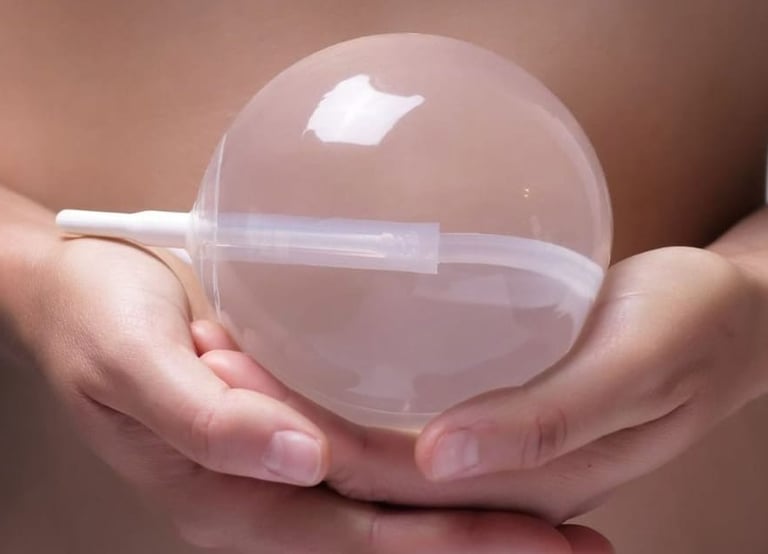Gastric Balloon


A gastric balloon, also known as an intragastric balloon, is a non-surgical weight loss procedure that involves placing a deflated balloon into the stomach and then filling it with saline to reduce the stomach's capacity. This helps patients feel fuller faster and eat less, which can aid in weight loss. The gastric balloon is typically a temporary solution and is removed after six months.
Key Steps in Gastric Balloon Procedure:
Consultation and Evaluation: The process begins with a thorough medical evaluation and consultation with a healthcare provider to determine if the patient is a suitable candidate for the procedure. This includes assessing medical history, current health status, and weight loss goals.
Pre-Procedure Preparation: Patients may need to follow specific dietary guidelines and fasting instructions before the procedure.
Insertion:
Anesthesia: The procedure is usually performed under mild sedation or local anesthesia to ensure the patient's comfort.
Endoscopic Placement: Using an endoscope (a thin, flexible tube with a camera), the deflated balloon is inserted through the mouth and into the stomach.
Inflation: Once in place, the balloon is filled with sterile saline solution until it reaches the desired size, typically about 400-700 milliliters.
Post-Procedure Care: Patients are usually monitored for a short period after the procedure before being allowed to go home. They will receive instructions on dietary changes and lifestyle modifications to follow while the balloon is in place.
Follow-Up and Removal:
Regular Monitoring: Follow-up visits are necessary to monitor the patient's progress, address any concerns, and adjust dietary plans as needed.
Removal: After six months (or as determined by the healthcare provider), the balloon is deflated and removed through a similar endoscopic procedure.
Advantages of Gastric Balloon:
Non-Surgical: The procedure is minimally invasive and does not require surgery or significant recovery time.
Temporary: The balloon is a temporary aid for weight loss and can be removed if needed.
Weight Loss: Patients can achieve significant weight loss, especially when combined with a healthy diet and lifestyle changes.
Improved Health: Weight loss can lead to improvements in obesity-related health conditions, such as diabetes, hypertension, and sleep apnea.
Ideal Candidates for Gastric Balloon:
Individuals with a body mass index (BMI) between 30 and 40 who have not been able to achieve significant weight loss through diet and exercise alone.
Those looking for a non-surgical, temporary weight loss solution.
Patients committed to following a comprehensive weight loss program, including dietary changes, physical activity, and behavioral therapy.
The gastric balloon can be an effective tool for weight loss when used in conjunction with a comprehensive weight management program. It helps patients reduce their food intake and adopt healthier eating habits, leading to significant weight loss and improved overall health.




